Bathroom tile

The undisputed favorite among bathroom and toilet decoration materials is tile - ceramic tiles made from a mixture of clay, sand and minerals and fired in a special way. Different types of tiles are used as a surface coating of walls and floors, as well as a decorative component of the decoration of the room. In this article we will talk about what types of tiles exist and how to choose the right tile for you.
Basic requirements
When choosing a glazed tile, as well as other finishing and construction materials that are used in rooms with high humidity, Have special requirements:
- Bathroom tile must be waterproof and practical.
- Tiles in the bathroom must be frequently washed to prevent the formation of plaque and mold, so such tiles must be resistant to chemical detergents.
- Bathroom tiles should be hygienic and if possible consist only of natural materials.
- Bathroom tile should be resistant to all external influences and not change its color under the influence of sunlight, steam and other factors.
- Tiles should be durable. Installing and removing tiles is a very troublesome business. If the wallpaper is easy to paste when necessary, then changing the tiles in the bathroom is not so simple. In addition, its cost is much higher than that of wallpaper or plastic panels. That is why you should choose the tile responsibly.
- The tile you buy should correspond to a clearly defined size for this type of tile, and should have the right corners and an even surface.
- If we are talking about glazed tiles, you must also be careful to ensure that the glazed coating is even, without blemishes and irregularities.
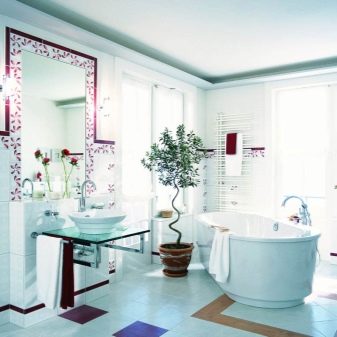
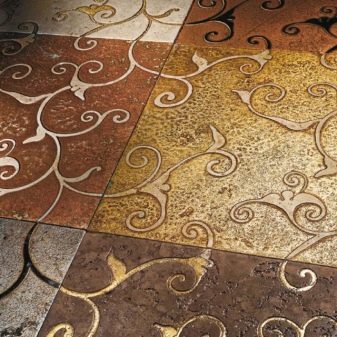
Types
Tile itself is a subspecies of ceramic tiles. However, it, in turn, is divided into several types.
By what places are planned to lay tiles, tile is divided into tile:
- For interior cladding;
- for exterior cladding;
- for swimming pools.
In addition, tiles can be wall and floor. Floor tiles are generally more durable and less slippery than wall tiles.

Depending on the manufacturing technology, there are the following types of tile:
Bicottura .
Bicottura - enameled ceramic porous tile of low strength, which is most often used to finish the walls of the interior. It is made by double-firing technology, which led to its name. Its main advantage is an incredibly rich selection of different decor options.

Monocottura
Monocottura is a more robust tile than bicottura and is fired once. Such tiles are used for both floors and walls, and some of its types are frost-resistant, which allows its use for decoration of exterior spaces.
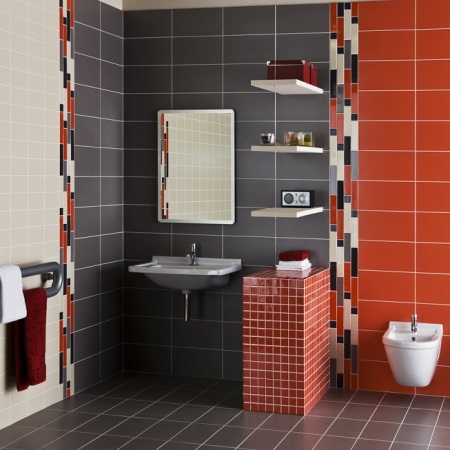
Monoporosa
Monoporosa is similar in its manufacturing technology to monoporosa, but in its physical properties it is more like bicottura. It is used exclusively for interiors and mainly for walls. A distinctive feature of this technology is the ability to produce large size tiles, which greatly facilitates the process of laying and forms fewer joints.
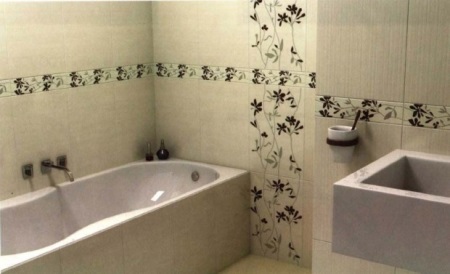
Clinker
Clinker is a tile of a non-standard geometric shape, which is used mainly for facing steps and stairs due to its high strength. Such tiles are not afraid of water, chemicals and other aggressive environmental influences.
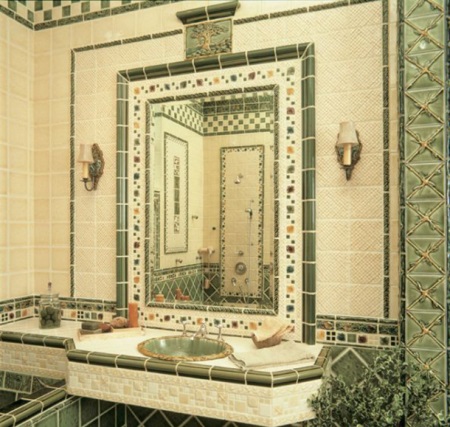
Porcelain tiles
Porcelain tiles are tiles with high strength and resistance to abrasion. As a rule, such tiles imitate a cut of natural stones such as granite, marble, etc.
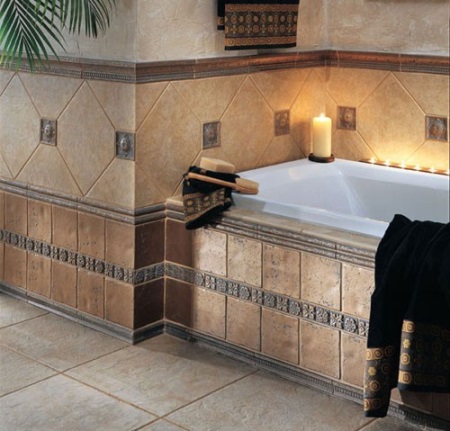
Cotto
Cotto is a special kind of tile, easily recognized because of its unique design. It can be made in a variety of terracotta hues, in an antique look.
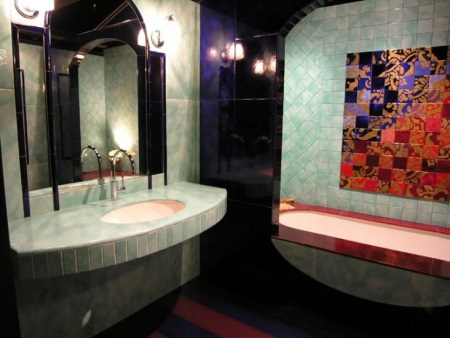
Classification by grade and symbols on the package
Due to the fact that each type of tile has its own specific physical properties, a special system of markings has been developed, which is designed to give the buyer the most complete picture of the product.
Thus, the marking primarily serves to indicate the type of tile. There are only four varieties of tiles: from I to III, where I grade means the highest quality tiles, and grade III - the lowest, as well as the so-called commercial grade. Commercial grade, in fact, the same as the third grade, but distinguished by its increased strength and lack of rich color choices.
How to understand the color number of the variety:
- Grade I is marked in red;
- Grade II - in blue or blue;
- Grade III - in green;
- Commercial grade - also in green.

However, there are other markings for tiles. The next type of marking will tell you about the abrasion rate of the tile.
Here the marking goes from I to V, where:
- I group - Tiles for bathroom, toilet and bedroom interiors;
- II group - tiles for rooms with low attendance, such as kitchen, corridor, etc. in residential buildings;
- III and IV groups - Tiles for rooms with high traffic;
- Group V - Tiles for the objects of trade and commercial activities, government agencies, etc.

In terms of how devastating for tiles can be exposed to chemical elements, tile is divided into four classes:
- AA - Tile does not change its properties and qualities under the influence of chemicals;
- А - Tiles can slightly change their appearance when exposed to chemicals;
- В - A tile changes significantly;
- С - complete loss of the original appearance of the tile.
There are other markings, but they are not so essential and it is much easier to guess their meaning:
- The image of a snowflake on the box means that the tile is frostproof,
- A footprint on the box means the tile is frost resistant. means that the tile is floor-proof.
- marking a square with small, multicolored tiles means that in one pack there will be tiles of the same type but in different shades.
Influence of tile color on the perception of the room
The choice of tiles for the bathroom is also important in terms of the decor of the room. After all, properly selected tiles can not only decorate, but also visually expand or, conversely, narrow the space.
- For the bathroom it is appropriate to use both warm and cold shades of colors.
- It is not recommended to buy bright, acidic colors, as they get bored very quickly and begin to irritate the eye. If you want to add color to the bathroom, it is better to make small contrasting inclusions.
- Dark floor tiles makes the room visually larger.
- You can also make the room seem bigger by using mirrored tiles on the walls.
- Black tile Visually narrow the space. However, you should not be afraid of all the dark shades of tile - you just need to know how to use them competently.

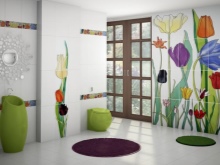
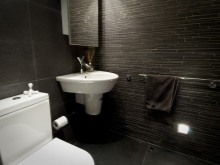
If you are not too versed in such matters as the choice of tiles, the easiest thing to do is to bring a plan of your bathroom and ask a consultant in the store. He will not only tell you what kind of tile, what collection and what colors you should use.
If you want, he will create for you a so-called 3D-visualization, where on a sheet of paper you will have a detailed plan of which part of the bathroom you should use tiles from which collection and in which color.
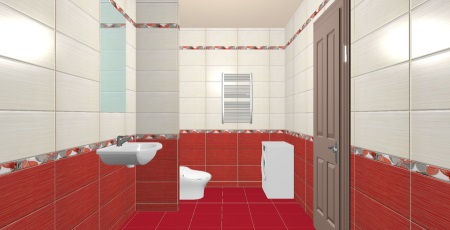
Features of choice
As we wrote above, tiles in the bathroom should be moisture resistant, as less porous as possible and resistant to chemical detergents. On the matte tiles almost no smudges and dirt are not noticeable, and with glazed tiles it is easier to clean, so the choice is entirely up to you.
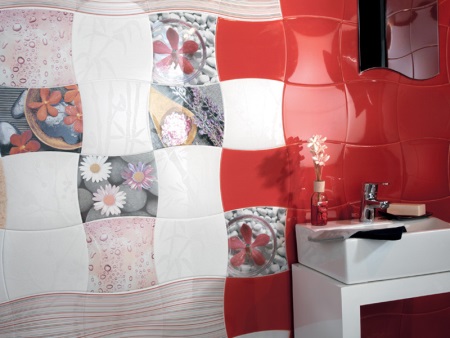
Before you buy, you should decide on the shape (rectangular or square) and size of the tile. Large tile is easier to install and it forms fewer seams, which then will accumulate bacteria and mold. However, it holds less well on the walls and it is more likely to form empty cavities underneath. Otherwise, when choosing tiles, pay attention to their markings.
With regard to the physical properties of floor tiles, all the same selection criteria apply as for wall tiles.
There are two main differences between floor tiles and wall tiles:
- It must have a surface that is non-slip and cannot cause injury. For this reason, many people prefer matte floor tiles.
- Floor tiles should be at least twice as thick as wall tiles.
In addition, floor tiles should be resistant to abrasion.
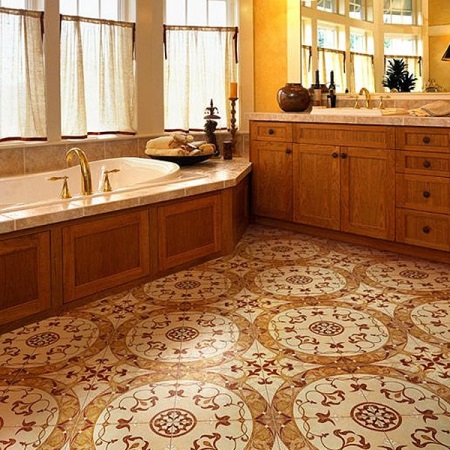
Creating Style
The choice of ceramic tile at the moment is so great that manufacturers are trying in every way to interest their potential customers in the most unusual colors, patterns and textures. For those who are carefully approaching the design of your apartment, and will not be content with the standard white or pastel tiles, manufacturers regularly produce collections of tiles in different styles.
It should also be taken into account that if you decided to perform the bath in any particular style, then not only the tiles, but also plumbing, furniture and other items in the bathroom should be made in the same style.
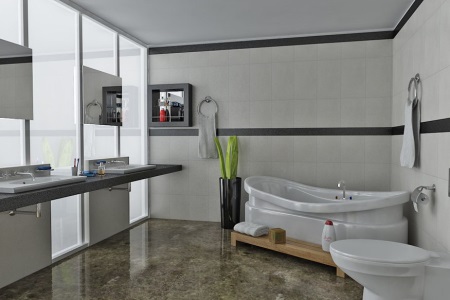
Styles such as vintage or country are better not to use in bathrooms of small size. It would look ridiculous. For a small bathroom, modern high-tech or modern styles are more appropriate, thanks to which the small space of the room can be used to maximum advantage in terms of functionality.
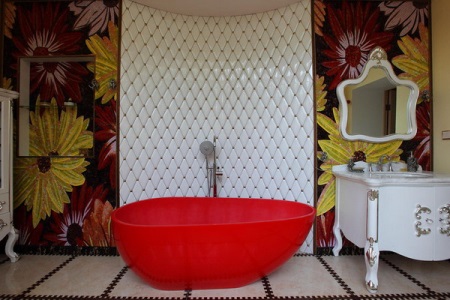
Tiles from one collection
Any collection contains two main varieties of wall tiles: background, monochrome tiles of several colors and shades, and decorative, with different patterns. Decorative tiles also include special ceramic tiles for steps, handrails and borders. Some collections also include floor tiles. When you buy tiles from a certain collection, you can choose wall and floor tiles in the tone at once, or you can buy tiles from another collection.
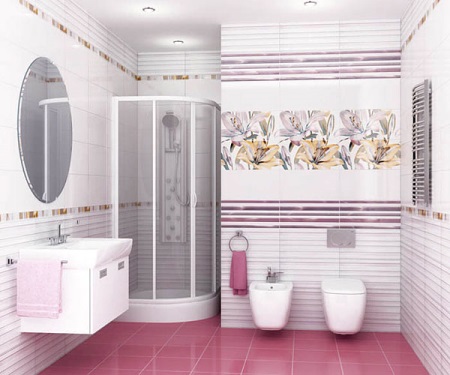
Options for combining
Ceramic tiles can easily be combined with other materials. The main thing is that all the finishing materials you use have water repellent properties if possible.
Tile in the bathroom can be combined with:
- wallpaper;
- mosaics;
- glass tiles;
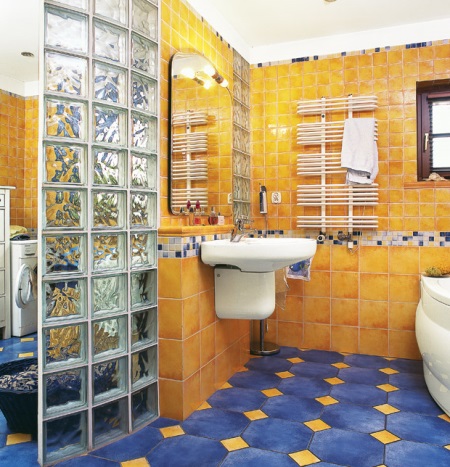
- natural stones;
- bamboo;
- PVC panels;
- and even wood panels with a suitable water repellent coating.
In addition, combining different materials in the bathroom can be used for zoning purposes.

Saving money! Creating a mosaic from tile waste
One of the options for finishing the bathroom is a mosaic finish. Of course, if you use a mosaic to finish all the walls of the room, it will "ripple". It is better to use it on a single wall or a small space in the bathroom.
The advantages of using mosaics:
- It is original - With a mosaic you can lay out any pattern or ornament to your liking;
- It is economical - For a mosaic you can buy chopped tiles, which are many times cheaper than conventional;
- It is convenient - mosaic tiles are much easier to install than conventional tiles. There is no need to ensure that the seams are perfectly flat.
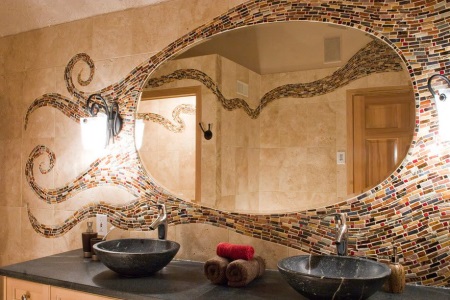
When choosing a tile, you need to pay attention to its quality, durability, firm-manufacturer, physical properties, as well as consider the compatibility of different colors and styles. If you take into account all the tips given in the article, tile will please you with its appearance for many years.





I like the combination of tiles or the inclusion of borders, panels. Monochrome tiles look boring.